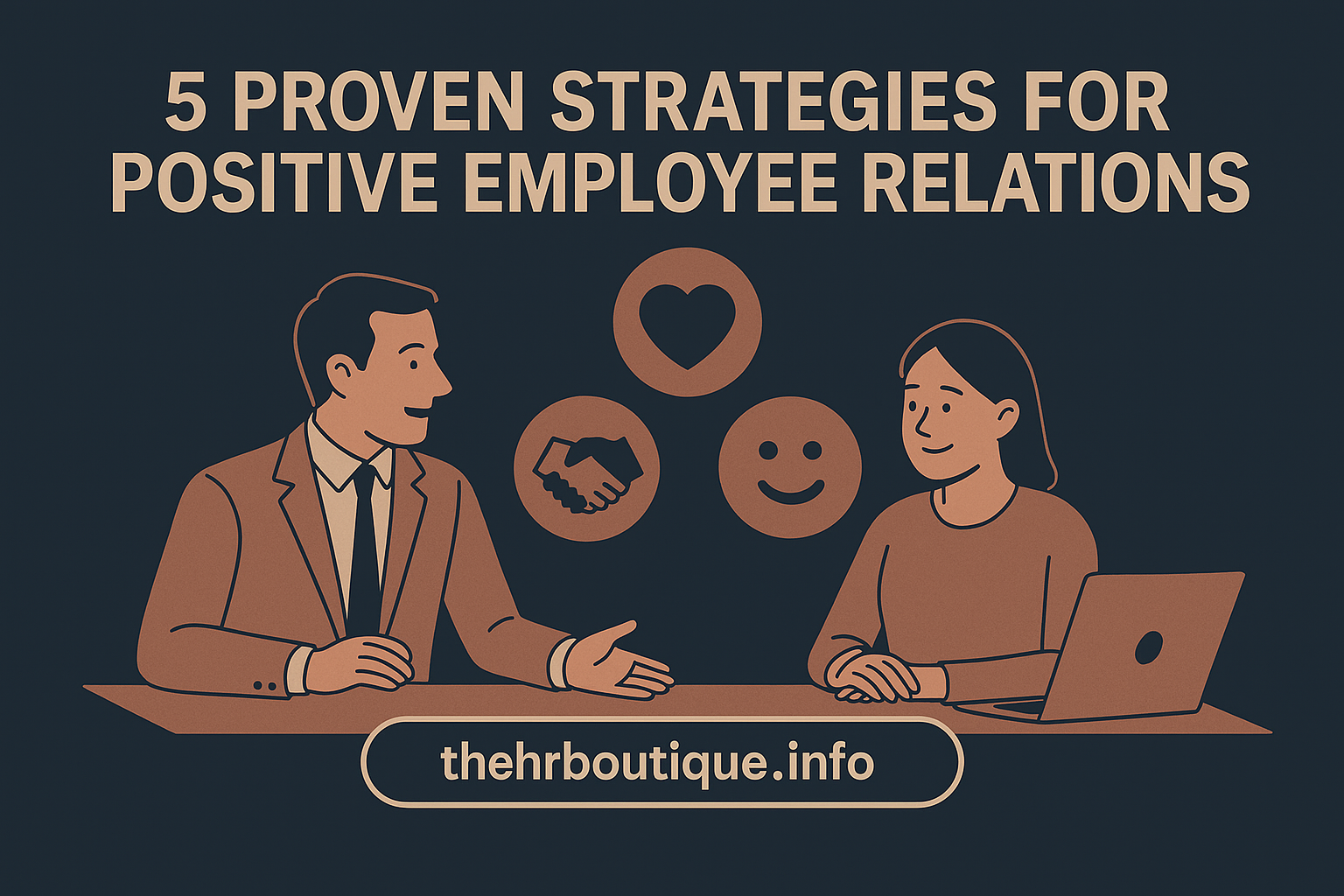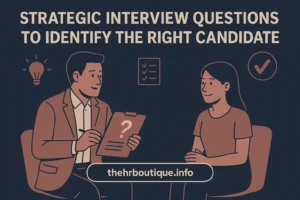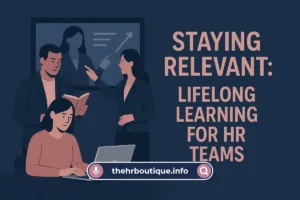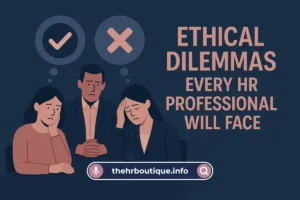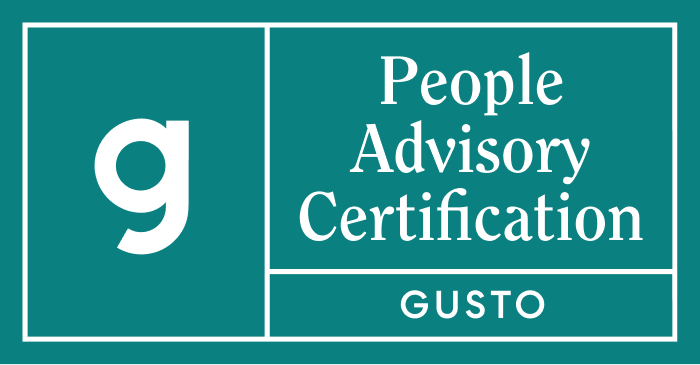Strong teams don’t just hit their goals they shape the culture, carry the brand and make the workplace worth showing up to. But here’s the thing: they’re never built on luck. They’re built through intentional, consistent effort to strengthen employee relationships from the inside out.
When relations break down, everything suffers engagement drops, turnover rises and collaboration flatlines. But when they’re built right? Teams move with clarity, communicate openly and perform with purpose.
That’s what this guide is about. 05 proven strategies you can use to create stronger teams, elevate trust and set a higher bar for how people work together. It’s not a theory. It’s what works in the real world, especially when backed by a strong employee relationship service.
Understanding Constructive Employee Relations and Its Importance
Employee relations is more than a policy or a department, it’s the pulse of your workplace. It’s how people interact, communicate and handle the everyday friction that comes with real work.
When it’s strong, it builds trust and consistency. When it’s ignored, morale dips, confusion spreads and talent walks. Cohesion isn’t just a bonus it’s a baseline for performance.
And yet, so many companies miss this. They focus on perks or tech, but forget the foundation connection. Building positive employee relations is how you get teams that show up, stay longer and do work that actually moves the needle. It’s not a soft skill, it’s your strategy.
Strategy 1: Foster Open and Transparent Communication
No one trusts what they don’t understand. That’s why transparency is your biggest tool for building team trust. It cuts through silence, ends second-guessing and gets everyone aligned around what matters.
If your team’s guessing what leadership’s thinking, you’ve already lost momentum. The fix? Create systems for regular, honest dialogue.
- Weekly check-ins
- Quarterly updates
- Two-way feedback loops
- Anonymous tools when needed
But don’t just share results to explain the reasoning. Transparency isn’t oversharing; its context. And when people understand the ‘why,’ they commit more to the ‘what.’ Clear beats clever. Every time.
Strategy 2: Promote Recognition and Appreciation
You don’t need a big budget to build loyalty, you need to notice people. Recognition is one of the most overlooked drivers of performance and yet it’s free.
No one wants to feel invisible at work. When you call out someone’s effort publicly or thank them privately, it sends a clear message: what you do matters.
Make praise a habit.
- Start meetings with shout-outs
- Encourage peer-to-peer recognition
- Tie rewards to values, not just metrics
When appreciation flows regularly, motivation follows. And teams that feel seen don’t burn out, they lean in harder. Recognition doesn’t cost you, it pays you back in retention, morale and energy.
Strategy 3: Encourage Collaboration and Team-Building Activities
Trust doesn’t show up on a calendar invite; it’s built through shared experience. If your team only connects during deadlines, you’re missing the magic of collaboration.
Team-building isn’t about cheesy games, it’s about building safety, breaking silos and reinforcing that we’re in this together.
From off-site retreats to shared side projects, you create space for people to connect beyond the task list. That connection turns into smoother communication, faster decisions and fewer bottlenecks.
When people know each other beyond job titles, they solve problems faster. Collaboration becomes less about roles and more about relationships that work.
Strategy 4: Provide Opportunities for Growth and Development
Nobody wants to stay where they feel stuck. Development is more than a benefit; it’s how you show employees that their future matters. It’s what keeps ambition aligned with your mission.
Offer mentoring. Give learning stipends. Build career paths that are visible and personal. Growth isn’t just about skills, it’s about signaling trust.
When someone sees a clear next step, they invest more in the present. People don’t leave companies that invest in them. They leave ones that don’t.
If you want long-term loyalty, give your team the tools to evolve. The result? A team that’s growing and staying with you.
Strategy 5: Address Conflicts Promptly and Fairly
Sweeping conflict under the rug is the fastest way to erode team trust. Unspoken tension doesn’t go away, it spreads.
The answer isn’t avoiding conflict. It’s managing it clearly and fairly. That means having systems in place before issues arise:
- Trained managers
- Neutral mediation channels
- Conflict policies that are actually used
People want to know that when something goes wrong, there’s a path to conflict resolution that’s objective and respectful.
When your team trusts that problems won’t be ignored or biased, they don’t hide issues they solve them. And that kind of culture makes your team stronger after every challenge.
Measuring the Success of Your Employee Relations Efforts
What gets measured gets improved and that includes team dynamics. You can’t afford to assume employee relations are “fine” without proof.
Track the signals: engagement scores, feedback participation, turnover trends and peer recognition activity. Use pulse surveys. Monitor exit reasons. Listen during 1:1s.
Your data doesn’t lie, it tells you where culture is working and where it’s quietly breaking. The goal isn’t perfection, it’s clarity. And clarity lets you act fast.
Strong employee relations aren’t built once they’re maintained daily. Measuring keeps you honest. It turns culture from a buzzword into a competitive advantage you can prove.
Conclusion
If you want stronger teams, start with positive employee relationships. The drill is about daily signals of trust, growth, recognition and open conversation.
These five strategies are your blueprint: communicate with honesty, celebrate what matters, build real collaboration, invest in growth and solve problems out loud.
You don’t need a culture overhaul to make progress. You need a shift in rhythm where people feel safe, seen and supported every day.
Start small. Track what shifts. And watch your team rise because of it. That’s how strong teams are built on purpose, with purpose.

